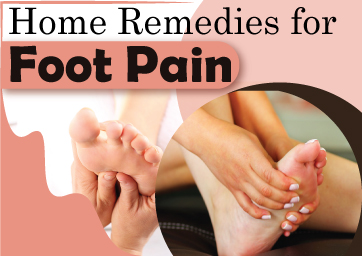Why does your foot hurt?
Because our feet perform so much work, they are more prone to wear and strain.
Physical stress or injury, which frequently results in sprains (ligament injuries) or fractures, is the most common cause of foot discomfort (injury to the bones). This type of injury is prevalent when the ankle flips, twists, or rolls over.
Foot pain is more common in people who engage in activities that require a lot of foot action and muscle. Overweight people, those who live a sedentary lifestyle, and those who work long hours in front of a computer are all at risk. To find out the necessary foot pain treatments that can help you reduce pain.
What are the Different Types of Foot Pain?
Physical Stress or injury is the most common cause of foot pain, which frequently results in sprains (ligament injuries) or fractures (injury to the bones). This type of injury is prevalent when the ankle flips, twists, or rolls over. These are common among sports enthusiasts, but they also happen to average individuals daily.
Read More: Best Stress Management Tips And Practices
Types of Foot Pain
● Arthritis: Foot pain is a common symptom of osteoarthritis, also known as "wear-and-tear" arthritis.
● Plantar fasciitis: Plantar fasciitis causes a stabbing pain on the bottom of your foot near the heel. The foot pain is particularly severe during the morning. So meet the professional for plantar fasciitis treatment.
● Bunions: Bunions are created by putting too much pressure on the foot. Swelling and blisters are common side effects.
● Fallen Arches: The fallen arch causes the foot to turn outward and can be painful.
● Hammertoes: Hammertoes receive their name from the fact that the toe joint looks like a hammer when it's stuck in an upward position. This deformity can cause severe foot pain and routine activities such as walking, running, and exercising.
Read More: Ayurvedic Treatment For Arthritis
How to Diagnose Foot Pain?
Check out simple steps for foot pain diagnosis:
Locate the exact area of pain on your foot.
Describe the nature and intensity of the pain.
Examine for any visible signs such as swelling, redness, or cuts.
Recall recent activities or injuries that may have caused the pain.
Find how the pain affects your ability to walk, stand, or put weight on the foot.
Prepare to discuss your medical history and lifestyle habits with a healthcare provider.
Consider any other symptoms resembling the foot pain (tingling, numbness).
How to Relieve Foot Pain
1. Get a warm foot soak
A foot soak is more than just immersing your feet in warm or hot water to unwind. It heals toenail fungus, soothes sprain and bruise pain, and promotes blood circulation, helping you to have a better night's sleep.
2. Do Some Stretches
You can also try some stretching exercises to reduce your foot pain relief. You can focus primarily on your toes or heel, or you can engage in several stretches to target your entire foot.
● Foot Roll - Plantar fasciitis is commonly treated by rolling your foot over a foot roller. With a foot roller that can withstand body weight and cradle the foot, massage both sides of the arch.
● Calf Raises - Stand in front of a wall with your feet a few inches apart and your hands gently resting on the wall for balance. Raise your heels to the highest point you can and hold them there for a second. Slowly lower your heels to the ground, taking three times the time it took to raise them. Perform 15 repetitions. Repeat numerous times throughout the day.
● Toe Exercise - Ten times, flex your toes, point them, and then curl them for a few seconds.
3. Practice strengthening exercises
It is one of the common foot pain causes that can be avoided by keeping your feet flexible and resilient. Walking daily is the most effective technique to keep your feet healthy. You can download a walking app on your phone that will track your steps and suggest how to plan your stroll.
To strengthen your feet and prevent future discomfort, try resistance training. Here are some foot-strengthening exercises you can try at home:
● Heel walks: As you walk, lift both feet so that you are walking on your heels. Toes should point forward but should not make contact with the ground. After taking 20 little steps ahead, turn around and repeat.
● Towel pulls: With your hands over your knees, hold either end of the towel in each hand. With the towel, pull back so that your foot spreads toward you. For at least 15 to 30 seconds, stay in this position. Repeat 2–4 times during each session.
● Hopping exercises can also be useful: Take a step forward with your right leg. For 10 to 30 repetitions, hop forward, sideways, and backward. Then move to the left foot and repeat.
Read More: 7 Exercises To Help Relieve Joint Pain
4. Get a foot massage
Foot massages are therapeutic foot care that includes a regular foot wash and acupressure. Regular foot massage can help to de-stress the area and provide a deep sense of healing and well-being.
Patients must use a foot massager to reduce stiffness and improve circulation. While sitting in a comfortable chair, rub and massage the bottoms of your feet. Pull your toes apart and bend them to massage them. Massaging your feet will be easier if you use lotion or oil to lubricate your skin.
5. Buy arch supports
Arch supports, also known as orthotics, can help you stand or walk without pain by keeping your feet stable. You can either buy them in a store or have a doctor produce them for you. Both are effective in alleviating back foot soreness and improving overall foot function.
6. Switch your shoes
Your footwear may be the source of your foot problems. Foot health can be harmed by wearing shoes that have outlived their usefulness, wearing the improper style of shoe, or wearing the wrong shoe size.
For sore feet remedies, consider investing in a new pair of well-fitting shoes. Choosing the right shoe might help you avoid frequent injuries that come with your particular workout. Good shoes can cushion your foot from strong landings and reduce the impact of your step.
7. Apply an ice pack for sore feet remedies
Cooling your feet might help to lessen the inflammation that causes discomfort. Roll your feet over an ice-filled plastic bag or a frozen water bottle. Freeze the affected area for 5 to 15 minutes many times a day to help reduce inflammation.
Read More: Foot Massage (Reflexology)
Does Your Foot Pain Signal a Serious Condition?
Foot pain may indicate a more significant underlying health problem, although this isn't always the case.
● Peripheral Arterial Disease: Peripheral artery disease is caused by a buildup of fatty deposits in the leg arteries. Over time, the arteries cannot carry oxygen and nutrient-rich blood to the arms and legs. When your PAD worsens, you might feel pain in feet at night.
● Rheumatoid Arthritis: Discomfort in the joints and ligaments of the feet may be a symptom of Rheumatoid Arthritis. If left untreated, Rheumatoid Arthritis can result in foot deformities. Rheumatoid Arthritis symptoms include heel soreness, burning and tingling pain in the arch or sole, nodules, and skin rashes.
● Diabetes: High blood sugar from diabetes damages the nerves that send impulses from your hands and feet, resulting in diabetic neuropathy. Diabetic neuropathy can cause numbness or tingling in the fingers, toes, hands, and feet. Another indicator is a burning, severe, or agonizing pain in the feet.
The Bottomline
While we have shared some of the most common and easy-to-follow home remedies for foot pain, it is equally important to find the cause of your pain. Especially if your pain is severe and worsens over time.
Seek immediate medical attention if:
You're in a lot of pain or your feet are swollen.
Your feet turn red and itchy when standing. This could also be a sign of infection
You are unable to walk or put weight on your foot bones.
At Kayawell, we have the best and most trusted podiatrist whom you can find nearby. Whether you have pain in your feet at night or you have suffered an injury, you can find the best care for your pain. Whether you have pain in your feet at night or you have suffered an injury, you can find the best care for your pain.



 Contact Us
Contact Us







 Hospitals
Hospitals
 Doctors
Doctors
 Diagnostic
Diagnostic
 Pharmacy
Pharmacy
 Health Tips
Health Tips
 Blog
Blog


















